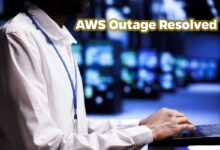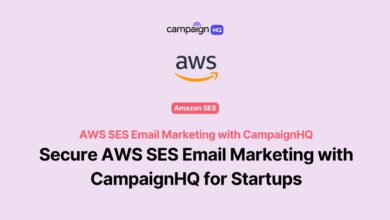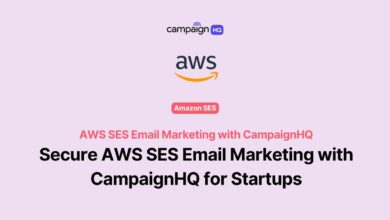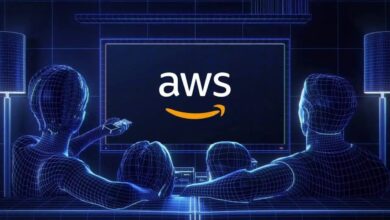AWS Free Tier: 12 Months of FREE Access with 50+ Services!
Want to explore the cloud without spending a dime? The AWS Free Tier is your golden ticket to experimenting with Amazon’s powerful cloud services—absolutely free for up to 12 months. Let’s dive into how it works, what you get, and how to make the most of it.
What Is the AWS Free Tier?

The AWS Free Tier is a generous offer from Amazon Web Services that allows new users to access a wide range of cloud computing resources at no cost. It’s designed to help individuals, startups, and developers get hands-on experience with AWS without financial risk. Whether you’re building a personal project, learning cloud architecture, or testing a prototype, the Free Tier gives you real-world exposure to AWS’s ecosystem.
Types of AWS Free Tier Offers
AWS doesn’t just offer one type of free access—it provides three distinct categories under the Free Tier umbrella, each serving different needs and use cases.
Always Free: Certain services are available indefinitely at no cost, even after your first 12 months.These include AWS Lambda (up to 1 million requests/month), Amazon DynamoDB (25 GB storage), and Amazon S3 (5 GB standard storage).12-Month Free: Most popular services like EC2, RDS, and Elastic Beanstalk are free for the first 12 months after account creation, subject to usage limits.Short-Term Trials: Some services offer limited-time trials (e.g., Amazon Connect for 12 months or AWS Glue for 7 days) that don’t require a credit card but are time-bound.
.Who Can Use the AWS Free Tier?Any individual or organization that has never had an AWS account can sign up and enjoy the full benefits of the Free Tier.You must be at least 13 years old and provide valid payment information (though you won’t be charged unless you exceed limits or upgrade)..
“The AWS Free Tier lowers the barrier to entry for cloud computing, making innovation accessible to everyone—from students to startups.” — Amazon Web Services
It’s important to note that once your 12-month period ends, you’ll automatically be charged standard rates if you continue using services beyond the free tier limits. However, AWS sends proactive email alerts before this transition occurs.
How to Sign Up for AWS Free Tier
Getting started with the AWS Free Tier is straightforward and takes less than 10 minutes. The process is designed to be beginner-friendly, even if you’ve never used cloud services before.
Step-by-Step Registration Process
Follow these steps to activate your AWS Free Tier access:
Go to the official AWS Free Tier page and click “Create an AWS Account”.Enter your email address, create a password, and choose “Personal” or “Professional” account type.Provide your contact information, including name, address, and phone number.Enter a valid credit card or debit card for identity verification.Note: You won’t be charged unless you exceed free usage limits.Choose a support plan (Basic is free and sufficient for most users).
.Verify your identity via a phone call or text message.Once confirmed, you’ll gain immediate access to all eligible Free Tier services.Verification and Security Tips
During registration, AWS performs identity verification to prevent abuse.Make sure the details you provide match your payment method.Also, enable Multi-Factor Authentication (MFA) immediately after signing up to protect your account..
To avoid unexpected charges, set up billing alerts through AWS Budgets. This way, you’ll receive notifications if your usage approaches paid tiers.
AWS Free Tier: 50+ Services You Can Use for Free
One of the most compelling aspects of the AWS Free Tier is the sheer number of services available at no cost. Over 50 core AWS offerings fall under the Free Tier, spanning compute, storage, databases, networking, machine learning, and more.
Compute Services in the Free Tier
Compute is the backbone of any cloud infrastructure. AWS offers several compute options for free:
- Amazon EC2: 750 hours per month of t2.micro or t3.micro instances (Linux or Windows) for 12 months. Perfect for hosting small websites or learning server management.
- AWS Lambda: 1 million free requests and 400,000 GB-seconds of compute time monthly—forever. Ideal for event-driven applications.
- Amazon Elastic Container Service (ECS): Run containers using Fargate or EC2 launch types within free usage limits.
Storage and Backup Options
Storing data securely is critical, and AWS provides robust free storage solutions:
- Amazon S3: 5 GB of standard storage, 20,000 GET requests, and 2,000 PUT requests per month—forever.
- Amazon EBS: 30 GB of General Purpose (SSD) storage and 2 million I/Os per month for 12 months.
- AWS Backup: Free trial integrations with services like EBS and RDS for backup orchestration.
Database Services Available for Free
Databases power modern applications, and AWS lets you experiment with managed database services at no cost:
- Amazon RDS: 750 hours per month of db.t3.micro instance for MySQL, PostgreSQL, MariaDB, Oracle, or SQL Server—free for 12 months.
- Amazon DynamoDB: 25 GB of storage and 25 units of read/write capacity—free forever.
- Amazon DocumentDB: 750 hours of cluster usage and 20 GB of storage for 12 months.
Top 5 Real-World Projects You Can Build on AWS Free Tier
The AWS Free Tier isn’t just for learning—it’s powerful enough to support real, functional projects. Here are five practical ideas you can build without spending a cent.
1. Personal Portfolio Website with EC2 and Route 53
Launch a professional portfolio site using a free EC2 t3.micro instance running Linux, host your domain with Route 53 (first year free for new domains), and serve content via Apache or Nginx.
You can even secure it with a free SSL certificate from AWS Certificate Manager (ACM) and route traffic through CloudFront for faster delivery.
2. Serverless API with Lambda and API Gateway
Build a RESTful API using AWS Lambda and Amazon API Gateway. With 1 million free Lambda invocations and 1 million HTTP API calls per month, you can create scalable microservices or webhooks.
For example, build a weather-fetching API that pulls data from a third-party service and returns JSON responses—all without managing servers.
3. Cloud-Based File Storage with S3 and CloudFront
Create your own private file-sharing system using Amazon S3. Upload documents, images, or videos and share them via pre-signed URLs. Use CloudFront to accelerate downloads and reduce latency.
This setup is ideal for small teams or freelancers who need secure, scalable storage without paying for Dropbox or Google Drive enterprise plans.
4. Chatbot with Amazon Lex and Lambda
Develop an AI-powered chatbot using Amazon Lex (the technology behind Alexa). Integrate it with Facebook Messenger, Slack, or your website. Process user inputs with Lambda functions and store conversation logs in DynamoDB.
Since Lex, Lambda, and DynamoDB all have generous free tiers, your chatbot can run indefinitely at zero cost.
5. Data Analytics Pipeline with Kinesis and QuickSight
Stream real-time data (like website clicks or IoT sensor readings) using Amazon Kinesis (1 million units free per month for 12 months). Process the stream with Lambda and visualize insights using Amazon QuickSight (1 SPICE capacity node free for 12 months).
This project teaches you real-time data processing and business intelligence tools used by major companies.
Common Mistakes to Avoid on AWS Free Tier
While the AWS Free Tier is incredibly valuable, many users accidentally incur charges due to simple oversights. Understanding these pitfalls can save you money and frustration.
Leaving Instances Running 24/7
One of the most common mistakes is forgetting to stop EC2 instances when not in use. The Free Tier gives you 750 hours per month—enough for one instance running continuously—but if you launch multiple instances or forget to terminate them, you’ll go over the limit.
Solution: Always stop or terminate unused instances. Use AWS Instance Scheduler to automate start/stop times based on your timezone.
Exceeding Free Tier Limits Without Realizing It
Some services have hidden thresholds. For example, S3 is free up to 5 GB, but if you upload 6 GB, you’ll be charged for the entire 6 GB at standard rates. Similarly, data transfer out beyond 15 GB/month incurs fees.
Solution: Monitor your usage via the AWS Billing Dashboard. Set up billing alerts at 50%, 80%, and 100% of expected thresholds.
Not Using the Free Tier Eligibility Checker
AWS provides a Free Tier Eligibility Checker in the console that shows which services you’re currently using within free limits.
Many users overlook this tool and only discover overages when they see their bill. Regularly check this dashboard to stay compliant.
How to Monitor and Control AWS Free Tier Usage
Effective monitoring is key to maximizing the AWS Free Tier without incurring unexpected costs. AWS provides several built-in tools to help you track your usage and stay within limits.
Using AWS Budgets and Billing Alerts
AWS Budgets allows you to set custom cost and usage thresholds. For example, you can create a budget that alerts you when your monthly spending exceeds $0.01—essentially flagging any usage that isn’t free.
- Navigate to the Billing & Cost Management dashboard.
- Create a new budget and select “Cost budget” or “Usage budget”.
- Set the threshold (e.g., $0.50) and configure email/SNS notifications.
This proactive approach ensures you never get surprised by a bill.
Checking the AWS Cost Explorer
AWS Cost Explorer provides visual graphs of your usage trends over time. It breaks down costs by service, region, and usage type.
Even if you’re within the Free Tier, Cost Explorer shows what you’re consuming. For instance, you can see how many EC2 hours you’ve used this month or how close you are to hitting your S3 storage limit.
Setting Up IAM Policies for Free Tier Compliance
If you’re working in a team or teaching a class, use AWS Identity and Access Management (IAM) to restrict access to paid services.
Create a policy that denies actions like launching large EC2 instances (e.g., m5.xlarge) or creating non-free resources. Attach this policy to users to enforce Free Tier compliance.
Advanced Tips to Maximize the AWS Free Tier
Once you’ve mastered the basics, you can use advanced strategies to stretch the value of the AWS Free Tier even further.
Combine Free Tier with AWS Educate and Grants
Students and educators can apply for AWS Educate, which provides additional free credits (up to $100–$200) and learning resources. These credits can be used on services outside the Free Tier, such as GPU instances or machine learning tools.
Nonprofits and startups may also qualify for AWS Promotional Credits or the AWS Activate program, which offers up to $100,000 in credits for eligible companies.
Use Infrastructure as Code (IaC) to Prevent Waste
Leverage tools like AWS CloudFormation or Terraform to define your infrastructure in code. This ensures you only deploy what you need and can easily destroy resources after use.
For example, write a CloudFormation template that spins up an EC2 instance, configures it, and shuts it down automatically after 2 hours. This prevents human error and resource leakage.
Leverage Spot Instances for Extended Compute Power
While not part of the Free Tier, Spot Instances can give you up to 90% off EC2 prices. If you’re running batch jobs or non-critical workloads, combine Free Tier usage with Spot Instances to maximize compute power on a tight budget.
What Happens After 12 Months? Planning Your Next Steps
The 12-month Free Tier clock starts the moment you create your AWS account. After this period ends, you’ll need to decide whether to continue with AWS on a paid basis or scale back your usage.
Transitioning to Paid AWS Services Smoothly
As your projects grow, you may outgrow the Free Tier. When that happens, consider upgrading to AWS’s pay-as-you-go model. You’ll only pay for what you use, with no long-term commitments.
To estimate costs, use the AWS Pricing Calculator. Input your expected usage of EC2, S3, RDS, etc., and get a detailed monthly cost projection.
Optimizing Costs Post-Free Tier
Even after the Free Tier ends, you can keep costs low by:
- Using Reserved Instances for predictable workloads (up to 75% savings).
- Enabling S3 Intelligent-Tiering to automatically move infrequent data to cheaper storage classes.
- Deleting unused snapshots, volumes, and AMIs to avoid storage fees.
Alternatives to AWS Free Tier After 12 Months
If you’re not ready to pay for AWS, consider other cloud providers with free offerings:
- Google Cloud Platform (GCP): $300 free credit for 90 days and always-free tier options.
- Microsoft Azure: $200 credit for 30 days and 12 months of select free services.
- Oracle Cloud: Always-free tier with ARM-based compute instances and 200 GB of storage.
However, AWS remains the most mature and feature-rich platform, making it worth the investment for serious projects.
Is the AWS Free Tier really free?
Yes, the AWS Free Tier is completely free for eligible services within specified usage limits. You won’t be charged as long as you stay within those limits. However, you must provide a valid credit card during registration for identity verification.
Does AWS Free Tier include EC2?
Yes, the AWS Free Tier includes 750 hours per month of Linux or Windows t2.micro/t3.micro EC2 instances for the first 12 months. This is enough to run one instance continuously.
Can I extend the AWS Free Tier beyond 12 months?
No, the 12-month Free Tier cannot be extended. However, certain services like AWS Lambda, DynamoDB, and S3 offer “Always Free” tiers that continue indefinitely.
Will I be charged after the 12-month Free Tier ends?
Only if you continue using AWS services beyond the free limits. AWS will notify you before your Free Tier expires. To avoid charges, either delete your resources or monitor usage closely.
How do I check my Free Tier usage?
Log in to the AWS Management Console, go to the Billing Dashboard, and view the “Free Tier” section. It shows your current usage against the free allowances for each service.
The AWS Free Tier is one of the most powerful tools available for anyone looking to learn, build, or innovate in the cloud. With over 50 services available for free—including compute, storage, databases, and machine learning—you can create real-world applications without spending a dime. By understanding the types of free offers, avoiding common pitfalls, and using monitoring tools effectively, you can maximize your benefits and lay the foundation for future success in cloud computing. Whether you’re a student, developer, or entrepreneur, the AWS Free Tier opens the door to limitless possibilities.
Further Reading:









